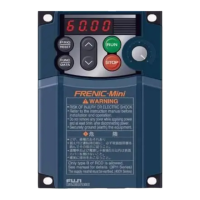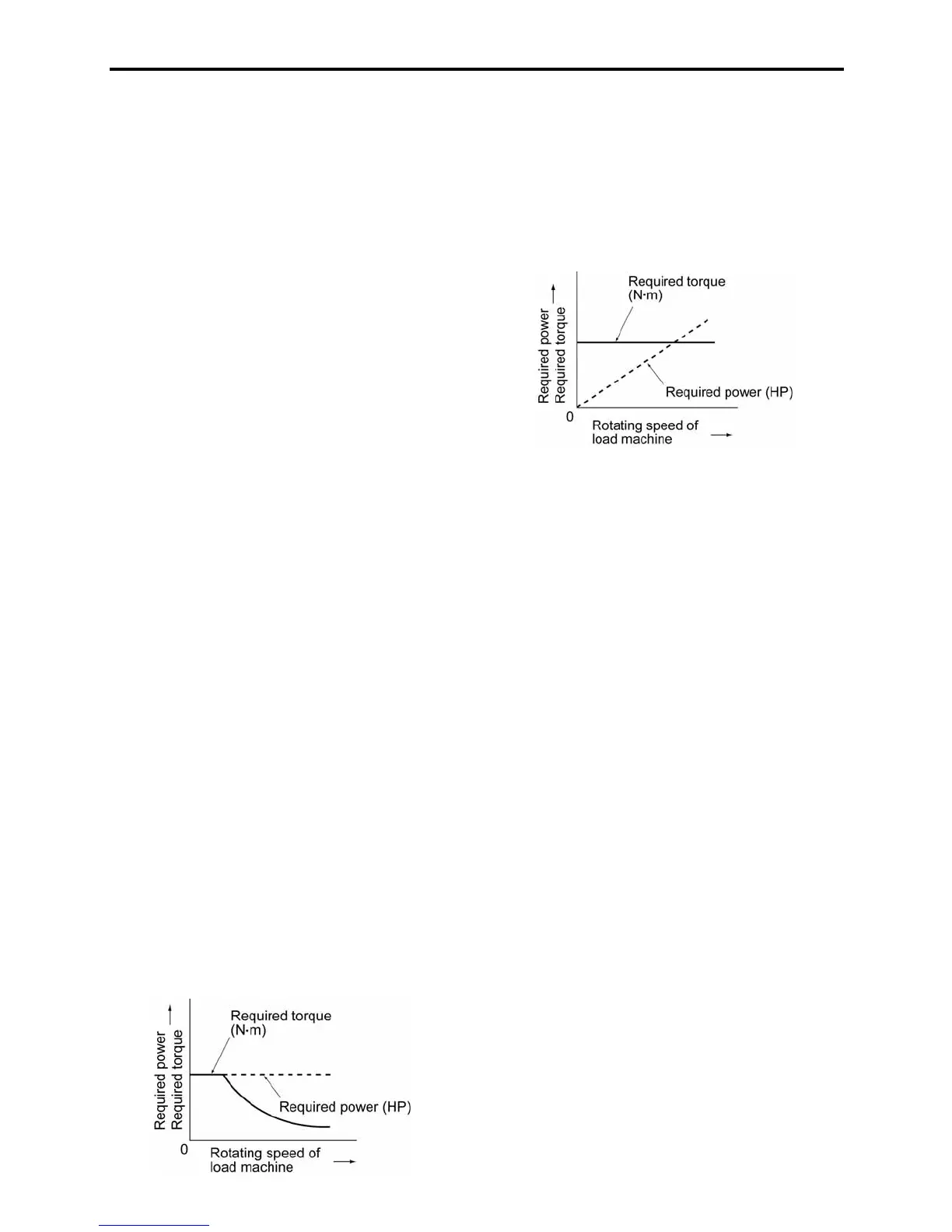G-2
If a deceleration time is shorter than the natural
stopping time (coast-to-stop) determined by a
moment of inertia for a load machine, then the motor
works as a generator when it decelerates, causing the
kinetic energy of the load to be converted to
electrical energy that is returned to the inverter from
the motor. If this power (regenerative power) is
consumed or accumulated by the inverter, the motor
generates a braking force called "braking torque."
Carrier frequency
Frequency used to modulate a modulated frequency
to establish the modulation period of a pulse width
under the PWM control system. The higher the
carrier frequency, the closer the inverter output
current approaches a sinusoidal waveform and the
quieter the motor becomes.
Related function code: F26
Coast-to-stop
If the inverter stops its output when the motor is
running, the motor will coast to a stop due to inertial
force.
Communications link function
A feature to control an inverter from external
equipment serially linked to the inverter such as a PC
or PLC.
Related function code: H30
Constant feeding rate time
Time required for an object to move in a constant
distance previously defined. The faster speed, the
shorter time and vise versa. This facility may be
applied to a chemical process that determines a
processing time of materials as the speed such as
heating, cooling, drying, or doping in some
constant-speed machinery.
Related function codes: E39 and E50.
Constant output load
A constant output load is characterized by:
1) The required torque is in inverse proportion to the
load r/min
2) An essentially constant power requirement
Related function code: F37
Applications: Machine tool spindles
Constant torque load
A constant torque load is characterized by:
1) A requirement for an essentially constant torque,
regardless of the r/min
2) A power requirement that decreases in
proportion to the r/min
Related function code: F37
Applications: Conveyors, elevators, and transport
machines
Control circuit terminals
Terminals on the inverter, which are used for
input/output of signals to control or manage the
inverter/external equipment directly or indirectly
Current limiter
A device that keeps an inverter output frequency
within the specified current limit.
Cursor
Marker blinking on the four-digit, 7-segment LED
monitor which shows that data in the blinking digit
can be changed/modified by keying operation.
Curvilinear V/f pattern
A generic name for the inverter output patterns with
curvilinear relation between the frequency and
voltage.
Refer to function code H07 in Chapter 9, Section
9.2.5 "H codes."
DC braking (DC injection braking)
DC current braking that an inverter injects into the
motor to brake and stop it against the moment of
inertia of the motor or its load. The inertial energy
generated is consumed as heat in the motor.
If a motor having the load with large moment of
inertia is going to stop abruptly, the moment of
inertia may force to rotate the motor after the inverter
output frequency has been reduced to 0 Hz. Use DC
injection braking to stop the motor completely.
Related function codes: F20 and F21

